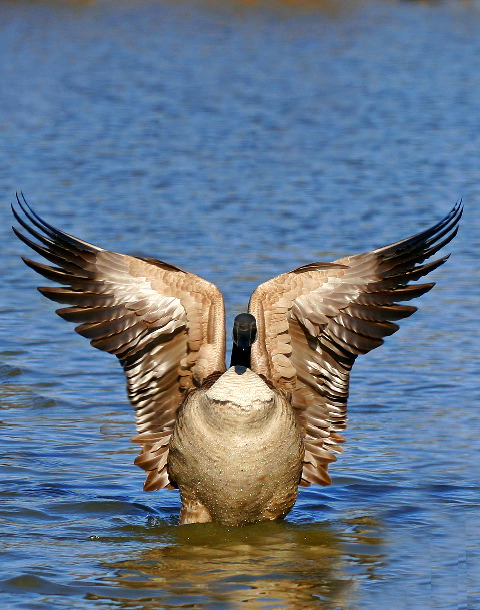Bird Migration
Contact
University of Arkansas System Division of Agriculture
Cooperative Extension Service
2301 S. University Ave.
Little Rock, AR 72204

Bird Migration
I appreciate birds but don’t know much about them. When I walk in the woods, I’m always looking down, not up where the birds are likely to be. It amazes me when I’m around serious birders when they confidently recognize a species by its call without ever seeing it flitting in the branches above. This task is made even harder when so many of the birds hiding in the branches are just passing through on their fall migration.
Facebook catches a lot of guff from its critics but it does provide a forum for people to share their special knowledge about the natural world. One of my Facebook friends is Joe Neal, a retired wildlife biologist who worked for many years for the Forest Service in the Ouachita National Forest and now lives in Fayetteville. Joe is a serious birder, a patient natural history photographer and a seriously hard worker. He goes out almost every day in a different direction and waits and watches to see what the natural world will serve up. For the past month he’s been featuring migrating song birds, many of which I’ve never heard of nor seen.
To we non-birders, fall migration begins when the Vs of geese high in the sky honk their way south ahead of a cold front further north. While these migrating water fowl are the most noticeable migratory birds, they are not the most numerous. More than 350 species of North American birds do what is referred to as long-distance migration. These species move north to breeding grounds in the United States and Canada in the summer and south to overwintering grounds in South and Central America in the fall.
For years I’ve enjoyed the return of nesting pairs of brown thrush and catbirds to my Fayetteville garden. The brown thrush, according to the range maps shown for it, overwinter in our area but not in my garden. They are what naturalists refer to as short-range migrators, with central Texas being their primary overwintering ground. The gray catbird has long-distance migration and overwinters in just a narrow band of brushy land along the Gulf of Mexico from Florida throughout Central America and in the Caribbean Islands. I notice their arrival in the late spring but never notice them slip away in the fall.
The neotropic migrants – birds such as the Baltimore Oriole, Indigo Bunting, Ruby-Throated hummingbird and, my favorite, the Scissor-tailed Flycatcher – overwinter in Central America and make the journey north every spring for nesting. Many of the smaller species migrate at night to avoid predators, so observant birders can often find migratory species hanging out in roadside weeds during the day as they refuel for the trip south. The fastest amongst them travel at 30 miles per hour, with a 3,000-mile journey taking several weeks to complete.
While I have yet to see my first flock of south-bound geese, in the last week Neal has helped log the southbound migration of hawks from atop Mt. Magazine to blue grossbeaks, common yellowthroats and many other sparrow-sized birds in Benton County. This fall migration goes on around us every fall but most of us are not tuned in to the ways of nature closely enough to notice these subtle travelers. But, thanks to Facebook and the work of Joe Neal and other dedicated birders, I now know more about a slice of nature I’ve missed out on all my life.
